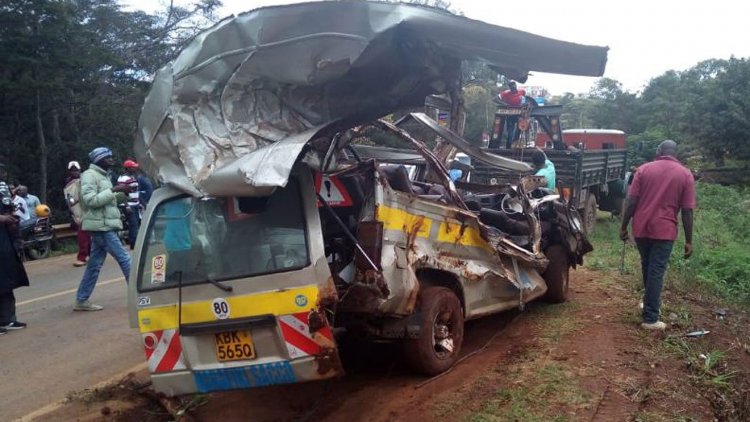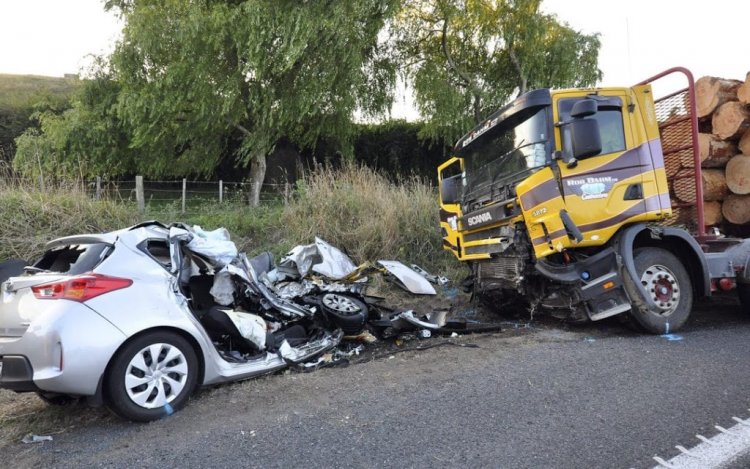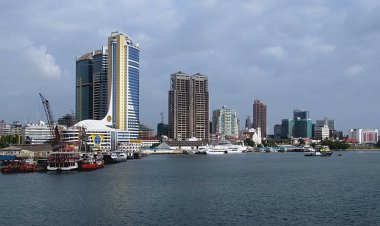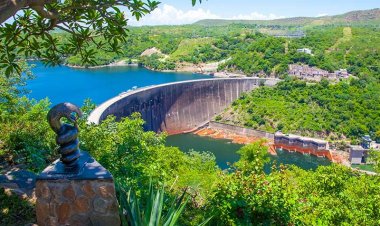Death on the Kenyan Highways
Someone recently joked that Mombasa road should be included in a thousand ways to die. It is hard to laugh at this joke if you have come across a near-death experience on any Kenyan highway. The video below by Sikika Road Safety shows an accident that happened after a motorcycle rider ignored the truck's indicator.
It is reported that Kenya loses between 3000 to 13000 of its population to road accidents and these, are only the reported cases.
The main headache for most drivers on Kenyan roads is dealing with other crazy drivers and in some cases, innocent lives end up paying for this arrogance. As we look at the top three deadliest highways, we will also explore some of the possible causes of road accidents.
1. Nairobi-Mombasa Highway
According to Budget Direct, an Australian insurance firm, this highway is included in the world’s most dangerous roads. In May this year, 5 family members were involved in a road accident on their way to a funeral and they all died on the spot. Hit and runs are also common on Mombasa road.
2. Nairobi-Nakuru Highway
The long stretch of road with magnificent eye view is often a death trap to some road users. Accidents involving pedestrians are common on the Waiyaki way section, while the rest is common with car crashes and head-on collisions. This year alone, accidents have claimed the lives of more than 30 people on this highway and most of the accidents were due to overtaking in bad weather.
3. Thika Superhighway
Host to random accidents, Thika road is a dreaded highway where accidents just happen. Although most of them are minor accidents that end up causing traffic jams, some are fatal, like the case where a motorcyclist and his two passengers were knocked down by a saloon car last month.
Langata road is also notorious for road accidents, especially at night. A 30-minute drive, at night, is turned into a 10-minute drive, with rogue matatu drivers, popularly referred to as the Usiku Sacco overspeeding and flouting other traffic rules.

[Photo Courtesy]
The major cause of these accidents ranges from human error, mechanical and environmental factors.
Human Error
Mr. Kiilu Daniel, the founder of Sikika Road Safety had a relative knocked down by a speeding vehicle and according to him, human errors contribute to 98% of the road accidents. Such errors include:
- Speed- The speed limit is usually 110km/h in areas outside towns but some drivers exceed this limit up to even 180km/h. When one drives at such a speed and comes across any unexpected encounter, say a tyre burst, he will not be able to contain the situation, and an accident will surely take place.
- Blind spots- Mr. Kiilu says some drivers don’t understand and cannot explain the meaning of a blind spot. Trailers and lorries usually drag on the road and most drivers overtake such trucks in a hurry, but some do it when their cars are in the truck drivers’ blind spots. If you cannot see the truck driver from his side mirror, then he also can’t see you. A blind spot when you are obstructed from other motorists' view.
- Black Spots- Even though they are usually marked by a continuous yellow line, most drivers don’t know them. Black spots are areas where accidents have occurred a number of times before. Drivers are supposed to be extra careful when approaching such points. They can do this by driving at a reasonable speed, not overtake and by maintaining emergency braking distance. Check the black spots as indicated by the Kenya police here.
- Driving under the influence- Hundreds of drivers drive under the influence of alcohol and this is done at night when the risk of accidents is high. When such drivers are confronted with the police officers, some, especially the matatu drivers usually run to escape the consequences.
Apparently, some drivers think that since they have been on the road for many years without encountering accidents, they are not at risk, yet, accidents happen often.

[Photo Courtesy]
Mechanical Factor
Unroadworthy vehicles are the main contributor when it comes to the mechanical factor. Such vehicles are not supposed to be on the road, but sadly enough, they are and they have the inspection stickers. Some operate without the breaking and parking lights while others have poor braking systems.
Braking on bumps- When bumps are put in place and motorists are not aware of them, they operate at the usual speed and when they encounter the bump, they brake abruptly causing the vehicle to lose control and cause an accident. Mr. Kiilu says that to avoid accidents, motorists are not supposed to brake on the bumps. He advises that drivers should avoid contact with the pedals in such a situation and control the vehicle with the steering only.
Environmental Factors
- Hydroplaning- Bad weather interferes with visibility and when it rains, there is usually no contact between the tyres and the road because of hydroplaning (when tyres lose contact with the road due to water). The water is the barrier and cars can easily be swept away. Mr. Kiilu offers that having very good tyres can help avoid this. Drivers also have to turn on the fog lights or headlights for visibility in such weather. Drivers should also never drive their cars on running waters, especially during floods.
- Bad roads- Roads that are not repaired on time, especially after bad weather could end up causing accidents. Potholes form and some drivers may be oblivious of them; when they encounter them and try to avoid the potholes, some end up causing head-on collisions.
Mr. Kiilu goes on to admit that most drivers assume all these and the small mistakes end up causing a lot of damage and even loss of human lives.
-Edited by Skeeter Imisa
If you have a real estate press release or any other information that you would like featured on African Real Estate Blog Post do reach out to us via email at [email protected].

































